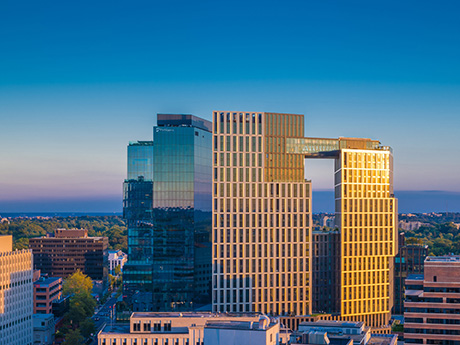The Washington, D.C., metro area, known for its steady and stable economic foundation, stands at the forefront of a transformative period in the U.S. commercial real estate market. Amid the backdrop of an evolving macroeconomic market, it’s essential to recognize the adaptability and resilience of the metro D.C. area’s multifamily market.

While recent capital market fluctuations continue to impact asset pricing across multiple sectors, the region’s fundamentals and property level performance have remained strong. According to Berkadia’s third-quarter multifamily market report, rent is up 3.6 percent in the District. Many properties are experiencing strong rent growth, which is anticipated to continue as there is a complete lack of future supply and the bulk of the apartment supply has delivered and is currently in lease-up.
While some regions have headwinds that are cause for some investor caution, particularly regarding regulatory concerns, other areas like Northern Virginia are capturing significant interest from buyers and showcasing the region’s ability to still command buyer demand. This is, in many ways, the recurring narrative for the D.C. metro region: resilience supported by concrete fundamentals.
Strong foundation
In the D.C. metro area, the decline in supply is highly likely to continue to drive a noteworthy increase in rent growth, especially in Northern Virginia. Unlike many areas grappling with massive amounts of supply and more under construction, the D.C. region has shown a path to future rent growth via a declining supply pipeline.

In many areas of the region, supply could drop over 50 percent over the next four years. Furthermore, the inventory under construction is a small fraction of the existing Class A inventory and will have a much less dramatic impact on property fundamentals compared to smaller markets.
Amazon’s impact
Economic downturns and softness usually result in people gravitating back toward gateway markets and historically safe, stable job centers, which has proven to be a significant advantage for the D.C. metro area. A prime example is Amazon’s newly established presence in the area.
The company’s recent opening of its 2.1 million-square-foot Phase I in June brings over 8,000 employees into the region for the first time since the COVID-19 pandemic, as well as 75,000 square feet of new neighborhood-serving retail with walkable streetscapes.
Notably, we observed a positive domino effect on nearby real estate. Leasing staff onsite are seeing increased volumes of Amazon-related traffic, and owners in the submarket are upgrading units, leading to a substantial boost in bottom-line rents. Much of this success can be attributed to having Amazon as a neighbor. However, it is still early days, and the full impact of Amazon’s presence is yet to be fully realized.
Remote work
It’s no surprise that remote work has continued to usher in a positive outlook for the multifamily sector. Properties that offer enhanced amenities and communal workspaces hold a competitive edge over others, as residents seek more flexible work arrangements.
Interestingly, while the D.C. office market is yet to see a complete recovery due to the slow return to physical offices, recent deliveries in the city itself are experiencing strong demand with lease-ups still maintaining 20 to 30 units per month. There is a clear desire among renters to be in the vibrant urban environment.
Government presence
One group that is still in the process of returning to offices is the federal government workforce. Historically, the D.C. region had a culture of remote work even before the COVID-19 pandemic. Federal employees and contractors often enjoyed flexible schedules. This dynamic can certainly contribute to the philosophy of being able to “live where you want to live” and is most likely a driving factor behind the recent strength observed in the suburbs.
That said, as the prospect of returning to the office looms, the trend toward urban living should continue to gain more momentum for the closer-in suburbs.
Promising performance
For the most part, real estate assets in the D.C. metro area are performing well. While there are a few exceptions, a highly educated workforce with high median incomes and a favorable rent-to-income ratio relative to other gateway markets underscore the region’s resilience, stability and attractiveness to investors.
— By Walter Coker and Brian Crivella, Senior Managing Directors, Berkadia. This article was originally published in the November 2023 issue of Southeast Real Estate Business.


